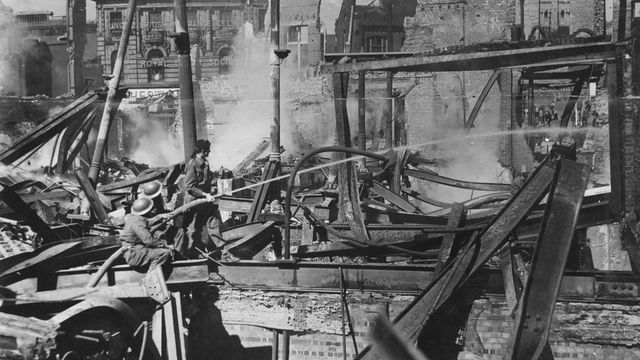22/07/2022 Regno Unito, Inghilterra, Norfolk
“If you ever come across anything suspicious like this item, please do not pick it up, contact your local law enforcement agency for assistance”
There is a “medium risk” unexploded Second World War bombs or shells could lie beneath a Norwich site where homes could be built. Experts have been carrying out investigations at the 10.5 acre, off Mile Cross Road, where Norwich City Council wants to build 200 council homes. The site used to be the City Works depot, where the council’s fleet of vehicles were once based. More recently it was the Mile Cross Business Centre, before those buildings were demolished. Norwich City Council agreed two years ago that it wanted to redevelop the site for housing, but needs to carry out work to make the site safe before that can happen. The council had already carried out test drillings of the area and has now applied to its own planning committee for permission to remove material and contaminants from the site and level off the ground. Given the site was used to dispose of rubble after buildings in the city were bombed during the Baedeker Raids of 1942, experts have had to consider whether there could be unexploded ordnance – such as bombs, mortar, shells and ammunition – at the site. A report put together by Hertfordshire-based 1st Line Defence, states that it has been assessed as “an overall medium risk from German and anti-aircraft unexploded ordnance” and a low risk from Allied unexploded ordnance. The analysts say five bomb strikes were recorded on or next to the site, while many other incidents happened in the wider area. They state: “Ground disturbances indicative of bomb craters are visible in high resolution post-war photography. “These bombs were falling in and around a likely infrequently accessed site wherein the ground cover was not conducive towards the observation of unexploded ordnance, thereby elevating the possibility of unexploded bombs falling unnoticed and becoming lost. “As a result, the site has been assessed as being at an overall medium risk of unexploded ordnance contamination.” They recommend that, when work is done, an unexploded ordnance specialist should be on site, that workers should be briefed on how to spot potential dangers and that a plan should be in place for what to do if any is discovered.
If you find anything that appears to be an explosive device, do not touch it, leave it where it is and call the police. We will contact the appropriate agencies to properly dispose of the item.
Dear editors, Biography of a bomb is aimed at highlighting the danger caused by unexploded bombs. Moreover, the most important aspect is that we work completely non profit, raising awerness about this topic is what drives us. We apologize if we make use of pictures in yours articles, but we need them to put a context in how findings are done. We will (and we always do) cite source and author of the picture. We thank you for your comprehension





